Black And Decker 7152 Handleiding
Bekijk gratis de handleiding van Black And Decker 7152 (20 pagina’s), behorend tot de categorie Boormachine. Deze gids werd als nuttig beoordeeld door 28 mensen en kreeg gemiddeld 4.3 sterren uit 14.5 reviews. Heb je een vraag over Black And Decker 7152 of wil je andere gebruikers van dit product iets vragen? Stel een vraag
Pagina 1/20

3/8 INCH (10MM) DRILL
INSTRUCTION MANUAL
Catalog Numbers 7252, 7152
S
S
S
S
SA
A
A
A
AV
V
V
V
VE
E
E
E
E
T
T
T
T
TH
H
H
H
HI
I
I
I
IS
S
S
S
S
I
I
I
I
IN
N
N
N
NS
S
S
S
ST
T
T
T
TR
R
R
R
RU
U
U
U
UC
C
C
C
CT
T
T
T
TI
I
I
I
IO
O
O
O
ON
N
N
N
N
M
M
M
M
MA
A
A
A
AN
N
N
N
NU
U
U
U
UA
A
A
A
AL
L
L
L
L
F
F
F
F
FO
O
O
O
OR
R
R
R
R
F
F
F
F
FU
U
U
U
UT
T
T
T
TU
U
U
U
UR
R
R
R
RE
E
E
E
E
R
R
R
R
RE
E
E
E
EF
F
F
F
FE
E
E
E
ER
R
R
R
RE
E
E
E
EN
N
N
N
NC
C
C
C
CE
E
E
E
E.
.
.
.
.
SAVE THIS MANUAL FOR FUTURE REFERENCE.
VEA EL ESPAÑOL EN LA CONTRAPORTADA.
POUR LE FRANÇAIS, VOIR LA COUVERTURE ARRIÈRE.
INSTRUCTIVO DE OPERACIÓN, CENTROS DE SERVICIO Y PÓLIZA DE GARANTÍA.
ADVERTENCIA: LÉASE ESTE INSTRUCTIVO ANTES DE USAR EL PRODUCTO.
Thank you for choosing Black & Decker! Go to
www.BlackandDecker.com/NewOwner
to register your new product.
PLEASE READ BEFORE RETURNING
THIS PRODUCT FOR ANY REASON:
If you have a question or experience a problem with your
Black & Decker purchase, go to
WWW.BLACKANDDECKER.COM/INSTANTANSWERS
for instant answers 24 hours a day.
If you canʼt find the answer or do not have access to the internet,
call 1-800-544-6986 from 8 a.m. to 5 p.m. EST Mon. - Fri
to speak with an agent.
Please have the catalog number available when you call.
KEY INFORMATION YOU SHOULD KNOW:
• Reversing drills must be switched into forward or reverse in order to operate.
They will not run in neutral.

SAFETY GUIDELINES - DEFINITIONS
It is important for you to read and understand this manual. The information it contains
relates to protecting YOUR SAFETY and PREVENTING PROBLEMS. The symbols
below are used to help you recognize this information.
DANGER: Indicates an imminently hazardous situation which, if not avoided, will
result in death or serious injury.
WARNING: Indicates a potentially hazardous situation which, if not avoided, could
result in death or serious injury.
CAUTION: Indicates a potentially haz ard ous situation which, if not avoided, may
result in minor or mod er ate injury.
NOTICE: Used without the safety alert symbol indicates a potentially hazardous situation
which, if not avoided, may result in property damage.
GENERAL POWER TOOL SAFETY WARNINGS
WARNING! Read all safety warnings and instructions. Failure to follow the
warnings and instructions may result in electric shock, fire and/or serious injury.
Save all warnings and instructions for future reference.
The term “power tool” in the warnings refers to your mains-operated (corded) power tool or
battery-operated (cordless) power tool.
1) Work area safety
a) Keep work area clean and well lit. Cluttered or dark areas invite accidents.
b) Do not operate power tools in explosive atmospheres, such as in the presence
of flammable liquids, gases or dust. Power tools create sparks which may ignite
the dust or fumes.
c) Keep children and bystanders away while operating a power tool. Distractions
can cause you to lose control.
2) Electrical safety
a) Power tool plugs must match the outlet. Never modify the plug in any way. Do
not use any adapter plugs with earthed (grounded) power tools. Unmodified
plugs and matching outlets will reduce risk of electric shock.
b) Avoid body contact with earthed or grounded surfaces such as pipes,
radiators, ranges and refrigerators. There is an increased risk of electric shock if
your body is earthed or grounded.
c) Do not expose power tools to rain or wet conditions. Water entering a power tool
will increase the risk of electric shock.
d) Do not abuse the cord. Never use the cord for carrying, pulling or unplugging
the power tool. Keep cord away from heat, oil, sharp edges or moving parts.
Damaged or entangled cords increase the risk of electric shock.
e) When operating a power tool outdoors, use an extension cord suitable for
outdoor use. Use of a cord suitable for outdoor use reduces the risk of electric shock.
f) If operating a power tool in a damp location is unavoidable, use a ground fault
circuit interrupter (GFCI) protected supply. Use of a GFCI reduces the risk of
electric shock.
3) Personal safety
a) Stay alert, watch what you are doing and use common sense when operating a
power tool. Do not use a power tool while you are tired or under the influence
of drugs, alcohol or medication. A moment of inattention while operating power
tools may result in serious personal injury.
b) Use personal protective equipment. Always wear eye protection. Protective
equipment such as dust mask, non-skid safety shoes, hard hat, or hearing protection
used for appropriate conditions will reduce personal injuries.
c) Prevent unintentional starting. Ensure the switch is in the off-position before
connecting to power source and/or battery pack, picking up or carrying the
tool. Carrying power tools with your finger on the switch or energizing power tools
that have the switch on invites accidents.
2

3
d) Remove any adjusting key or wrench before turning the power tool on. A wrench
or a key left attached to a rotating part of the power tool may result in personal injury.
e) Do not overreach. Keep proper footing and balance at all times. This enables
better control of the power tool in unexpected situations.
f) Dress properly. Do not wear loose clothing or jewelry. Keep your hair, clothing
and gloves away from moving parts. Loose clothes, jewelry or long hair can be
caught in moving parts.
g) If devices are provided for the connection of dust extraction and collection
facilities, ensure these are connected and properly used. Use of dust collection
can reduce dust-related hazards.
4
4
4
4
4)
)
)
)
)
Power tool use and care
a) Do not force the power tool. Use the correct power tool for your application.
The correct power tool will do the job better and safer at the rate for which it was designed.
b) Do not use the power tool if the switch does not turn it on and off. Any power
tool that cannot be controlled with the switch is dangerous and must be repaired.
c) Disconnect the plug from the power source and/or the battery pack from the
power tool before making any adjustments, changing accessories, or storing
power tools. Such preventive safety measures reduce the risk of starting the power
tool accidentally.
d) Store idle power tools out of the reach of children and do not allow persons
unfamiliar with the power tool or these instructions to operate the power tool.
Power tools are dangerous in the hands of untrained users.
e) Maintain power tools. Check for misalignment or binding of moving parts,
breakage of parts and any other condition that may affect the power toolʼs
operation. If damaged, have the power tool repaired before use. Many accidents
are caused by poorly maintained power tools.
f) Keep cutting tools sharp and clean. Properly maintained cutting tools with sharp
cutting edges are less likely to bind and are easier to control.
g) Use the power tool, accessories and tool bits etc., in accordance with these
instructions, taking into account the working conditions and the work to be
performed. Use of the power tool for operations different from those intended could
result in a hazardous situation.
5) Service
a) Have your power tool serviced by a qualified repair person using only identical
replacement parts. This will ensure that the safety of the power tool is maintained.
SPECIFIC SAFETY RULES
•Hold tool by insulated gripping surfaces when performing an operation where the
tool may contact hidden wiring or its own cord. Contact with a “live” wire will also
make exposed metal parts of the tool “live” and shock the operator.
• Use clamps or other practical way to secure and support the workpiece to a
stable platform. Holding the work by hand or against your body is unstable and may
lead to loss of control.
• When working on a ladder or on scaffolding be sure to lay the tool down on its
side when not in use. Some tools with large battery packs will stand upright but may
be easily knocked over.
WARNING: ALWAYS use safety glasses. Everyday eyeglasses are NOT safety glasses.
Also use face or dust mask if drilling operation is dusty. ALWAYS WEAR CERTIFIED
SAFETY EQUIPMENT:
• ANSI Z87.1 eye protection (CAN/CSA Z94.3),
• ANSI S12.6 (S3.19) hearing protection,
• NIOSH/OSHA respiratory protection.
WARNING: Some dust created by power sanding, sawing, grinding, drilling, and
other construction activities contains chemicals known to cause cancer, birth
defects or other reproductive harm. Some examples of these chemicals are:
• lead from lead-based paints,
• crystalline silica from bricks and cement and other masonry products, and
• arsenic and chromium from chemically-treated lumber.
Your risk from these exposures varies, depending on how often you do this type of work.
To reduce your exposure to these chemicals: work in a well ventilated area, and work with
approved safety equipment, such as those dust masks that are specially designed to filter
out microscopic particles.
Product specificaties
| Merk: | Black And Decker |
| Categorie: | Boormachine |
| Model: | 7152 |
Heb je hulp nodig?
Als je hulp nodig hebt met Black And Decker 7152 stel dan hieronder een vraag en andere gebruikers zullen je antwoorden
Handleiding Boormachine Black And Decker

26 Augustus 2024

26 Augustus 2024

10 Juni 2024

17 Augustus 2023

20 Juni 2023

18 Juni 2023

18 Juni 2023

17 Juni 2023

16 Juni 2023

16 Juni 2023
Handleiding Boormachine
- Meec Tools
- Narex
- Rikon
- Hazet
- Smart365
- Toolson
- Worx
- Powerblade
- Basetech
- Ryobi
- Bruder Mannesmann
- Alpha Tools
- Ergotools Pattfield
- Varo
- Elu
Nieuwste handleidingen voor Boormachine
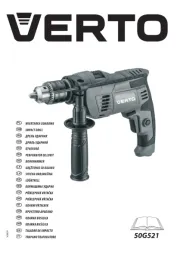
30 Juli 2025
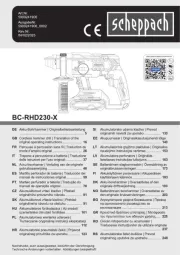
29 Juli 2025
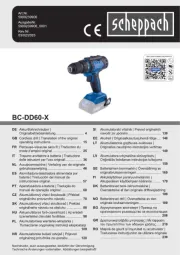
29 Juli 2025
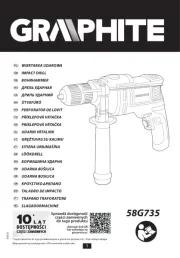
29 Juli 2025
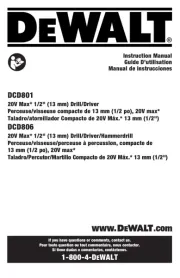
29 Juli 2025
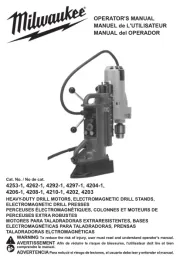
22 Juli 2025
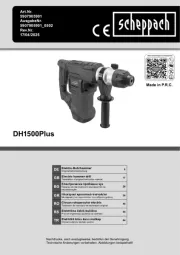
21 Juli 2025
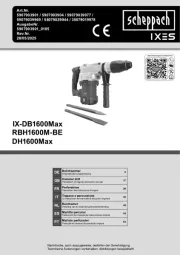
21 Juli 2025
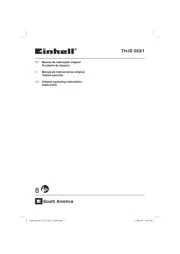
21 Juli 2025
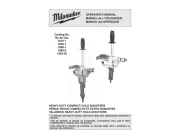
16 Juli 2025